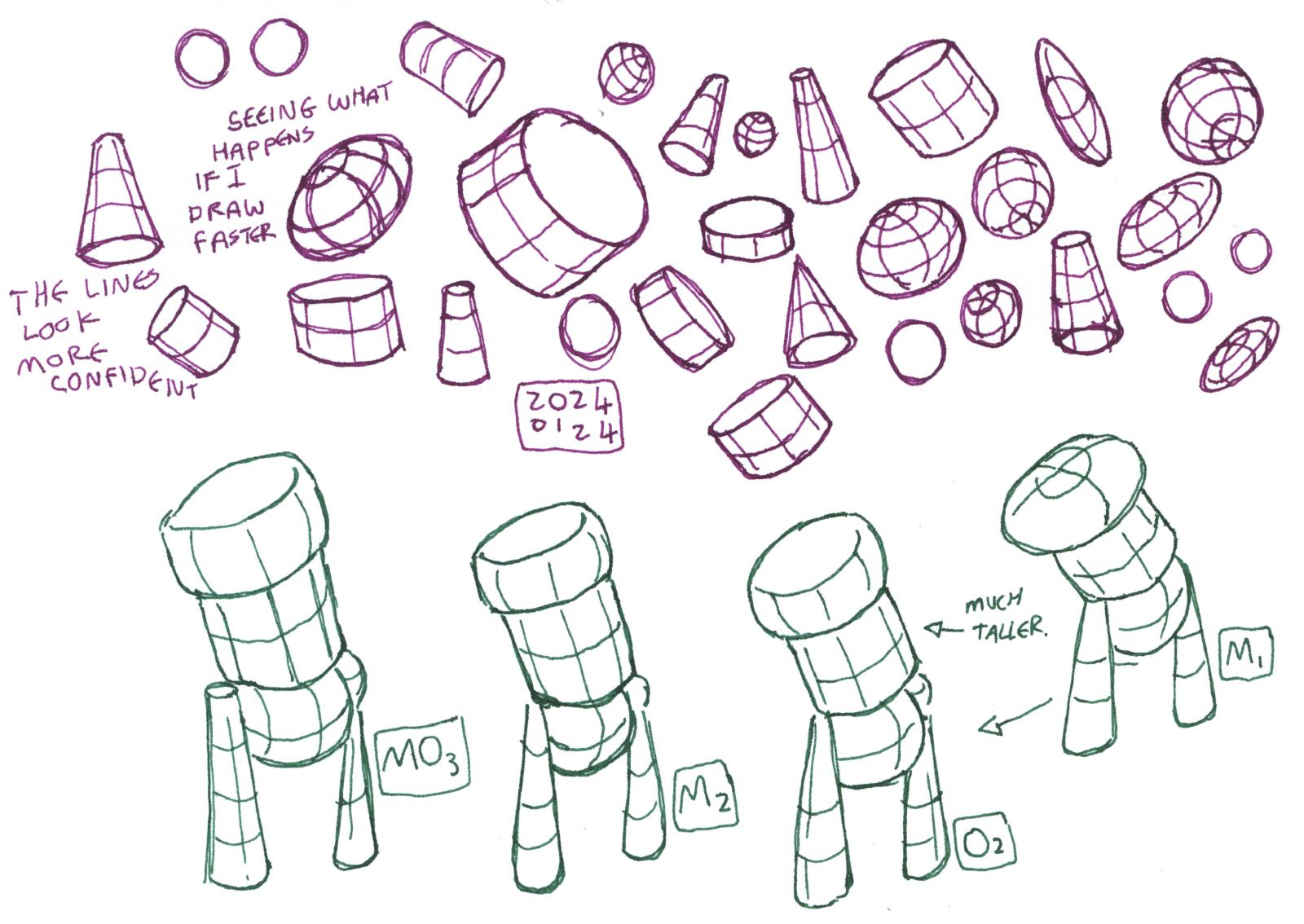#131 - The Opposite Of A Good Rule Can Also Be A Good Rule
Or What happens when you “break the rules.”Warm-Up Drawing Exercises

Quickly become better at drawing—without burning out—by using my workbook.
Some of the new things we did became outsized successes, and the company grew immensely. This success attracted a different kind of employee; most of my new colleagues wanted to be a part of the success, but most of all, they wanted rules they could follow: if they wanted to know that if they just did something a certain way, they would not get fired. And a giant bureaucracy formed. Ordering new hardware wasn’t a matter of borrowing the boss’s credit card anymore; now, you had to go through a finance department, and they needed to see approved budgets, suppliers, and orders. The IT department had to approve the hardware. Product management had to approve things.
We didn’t do new things much, and it wasn’t for me, so I went to an art academy. As one does.
I see attempts at rule-following in art a lot. People want to know the right proportions of humans and such, the idea that if you follow the rules, you will make great art.
Rules can stifle creativity.
Here are some other interesting ways you can look at rules.
Vilppu came up with, “There are no rules, just tools,” meaning you can use the tools to improve your art. The rules are optional; you can use them or decide not to.
Another way I looked at rules was as ingredients, things you can add more of in your art or leave out. Like every meal does not need every herb you have—it would taste terrible!—your art doesn’t need to follow all the rules. Use more of one ingredient and less of another. I arrived at this insight when thinking about Cézanne’s approach: he let go of the correctness of form (a rule to follow: always correct form!) in favor of gaining back control of the composition design of the image. He had decided that these two “ingredients” don’t always go well together and chose one over the other. It was an unconventional choice, and he did something new and extraordinary.
I have written about this before, but I am writing this article because I ran into yet another radical way of looking at rules. In his excellent book “Alchemy,” Rory Sutherland successfully argues that “the opposite of a good idea can also be a good idea.” Translated to art: the opposite of following a good rule can also be a good rule! (Note that he wrote, “CAN be a good idea.”)
Here’s an example. There is this “rule of tangents” where you must avoid objects from different distances seemingly touching each other in your image because it reduces the sense of depth. However, I have seen a painting where a human was squeezed inside the frame, touching the sides of the painting—tangents. And yet, it worked because it added to the intended claustrophobic feel.
A good photographer friend is experimenting with portraits of people—taken from behind. And it works.
Discarding rules isn’t always a good idea. Elon Musk’s approach to Twitter is an excellent example of that. He looked at all the things Twitter was supposed to be doing, the rules it was supposed to be following, as requirements, and he questioned every requirement. He examines every requirement (rule) to optimize an organization or product. He takes rule-ditching to the next level. As I have argued, ditching rules is not necessarily a bad idea, but in Twitter’s case, he seems to have discarded some rules or requirements that Twitter should have kept following.
The “rules of art” are useful! See them as an encyclopedia of artistic knowledge, the crystallization of all creative techniques collected by all artists who ever lived over the past tens of thousands of years, a catalog of what works. Millions of person-years of work were put in to make these artistic discoveries, and we can learn them at our leisure, just like that! We’d be crazy to throw all of that knowledge away.
The “rules” are almost always there for a reason, so tread lightly and use a light touch when experimenting with discarding rules.
With that caveat, think of rules you think you are supposed to follow, and notice how liberating it feels when you contemplate doing the opposite!
Try ditching a rule. It might lead to great results and something new.